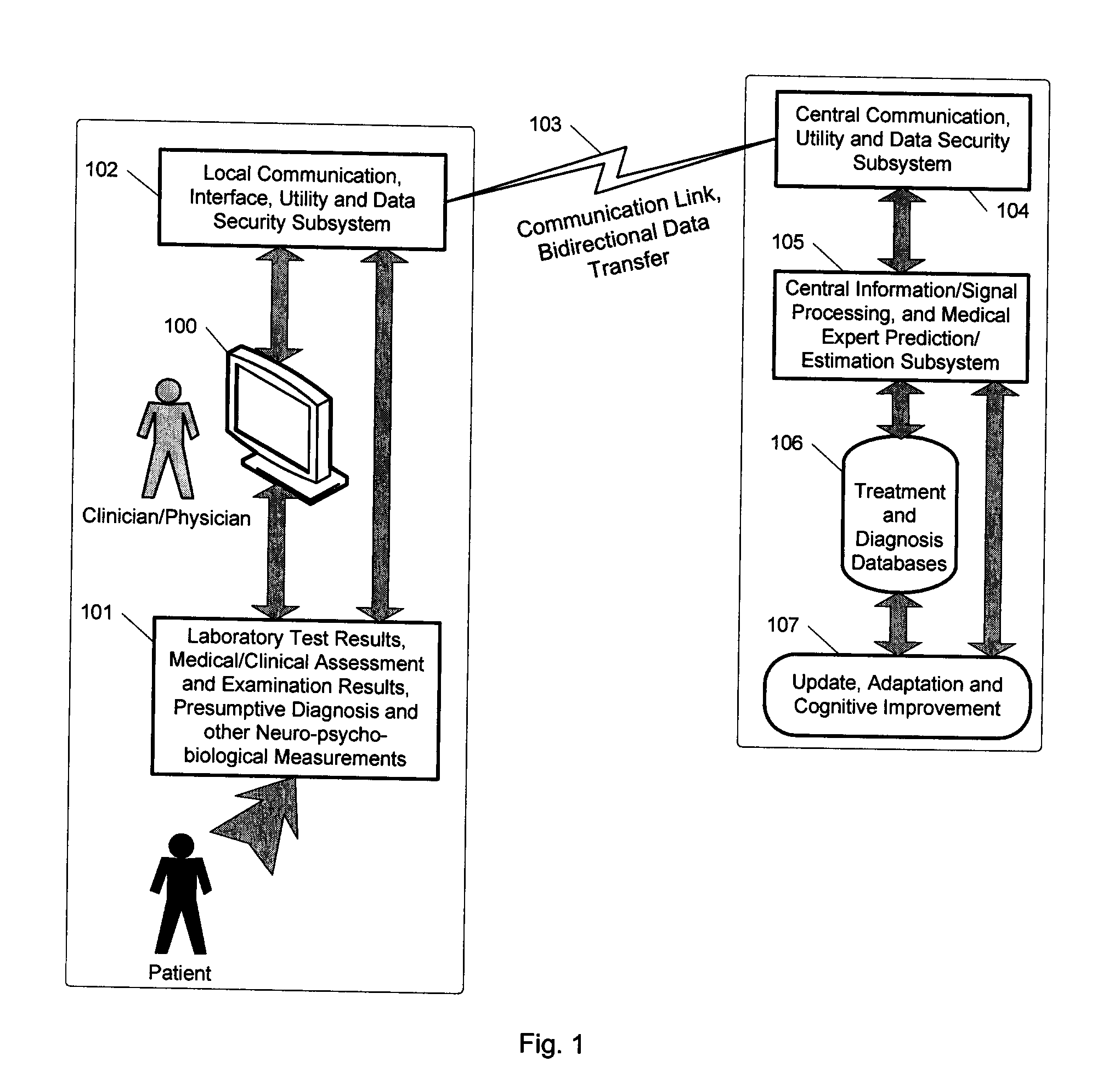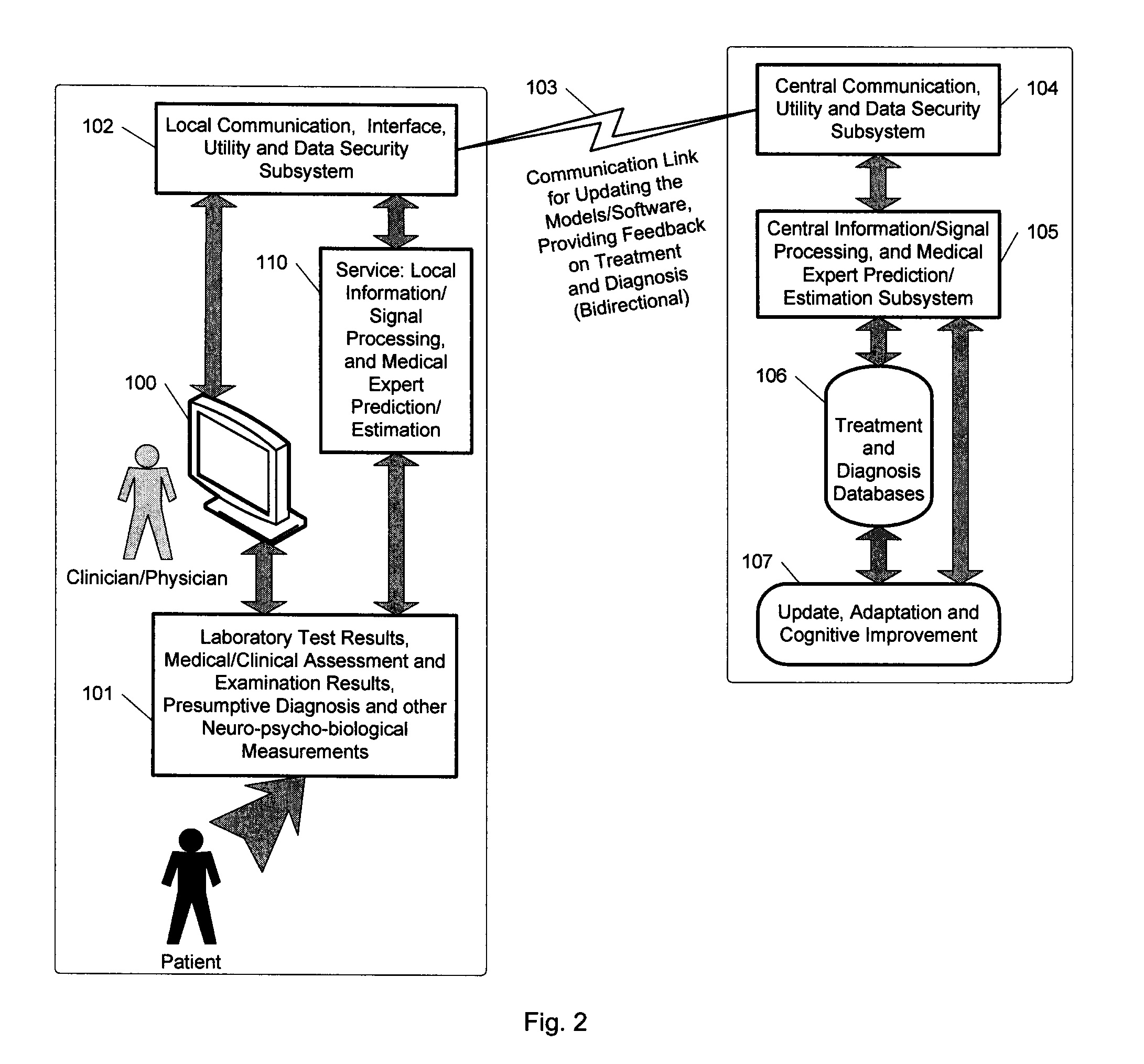Expert system for determining patient treatment response
a treatment response and expert system technology, applied in the field of medical treatments, can solve the problems of increasing despondent patients, personal and economic costs of delayed or ineffective therapy, and insufficient development of the process for selecting optimal treatment, so as to minimize the possibility of misclassification and the complexity of the classification model, the effect of minimizing the complexity of the model
- Summary
- Abstract
- Description
- Claims
- Application Information
AI Technical Summary
Benefits of technology
Problems solved by technology
Method used
Image
Examples
Embodiment Construction
a flow-chart illustrating an embodiment using data fusion procedure (including feature level data fusion, and processor fusion).
[0062]FIG. 9 shows a comparison of attribute number 1 among responders versus non-responders to SSRI therapy. The attribute is: ‘Coherence at 10 Hz, for EEG sensor pair T3-T5’.
[0063]FIG. 10 relates to SSRI therapy and shows a scatter plot of projection of pre-treatment data samples onto the first 2 major principal components using the KPCA method with a Gaussian kernel. ‘NR’ denotes subjects who are non-responsive to SSRI (after 6 weeks of treatment), and ‘R’ denotes responsive subjects. FIG. 10.a shows projection of data samples or epochs, and FIG. 10.b shows a subject-wise scatter plot of projected pre-treatment data in SSRI therapy.
[0064]FIG. 11 illustrates an independent experimental test for TMS response prediction and provides an illustrative example of one type of prediction result on 7 new test subjects, using both EO and EC pre-treatment data.
[0065...
PUM
 Login to View More
Login to View More Abstract
Description
Claims
Application Information
 Login to View More
Login to View More - R&D
- Intellectual Property
- Life Sciences
- Materials
- Tech Scout
- Unparalleled Data Quality
- Higher Quality Content
- 60% Fewer Hallucinations
Browse by: Latest US Patents, China's latest patents, Technical Efficacy Thesaurus, Application Domain, Technology Topic, Popular Technical Reports.
© 2025 PatSnap. All rights reserved.Legal|Privacy policy|Modern Slavery Act Transparency Statement|Sitemap|About US| Contact US: help@patsnap.com



